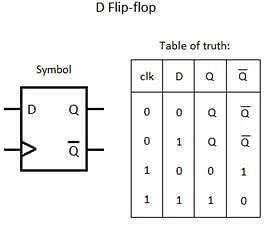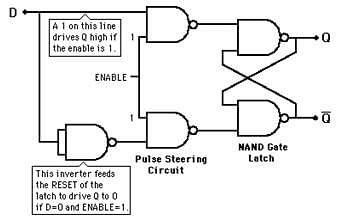Electrical Engineering (EE) Exam > Electrical Engineering (EE) Tests > Test: D Flip Flops - Electrical Engineering (EE) MCQ
Test: D Flip Flops - Electrical Engineering (EE) MCQ
Test Description
15 Questions MCQ Test - Test: D Flip Flops
Test: D Flip Flops for Electrical Engineering (EE) 2024 is part of Electrical Engineering (EE) preparation. The Test: D Flip Flops questions and answers have been prepared
according to the Electrical Engineering (EE) exam syllabus.The Test: D Flip Flops MCQs are made for Electrical Engineering (EE) 2024 Exam.
Find important definitions, questions, notes, meanings, examples, exercises, MCQs and online tests for Test: D Flip Flops below.
Solutions of Test: D Flip Flops questions in English are available as part of our course for Electrical Engineering (EE) & Test: D Flip Flops solutions in
Hindi for Electrical Engineering (EE) course.
Download more important topics, notes, lectures and mock test series for Electrical Engineering (EE) Exam by signing up for free. Attempt Test: D Flip Flops | 15 questions in 30 minutes | Mock test for Electrical Engineering (EE) preparation | Free important questions MCQ to study for Electrical Engineering (EE) Exam | Download free PDF with solutions
Detailed Solution for Test: D Flip Flops - Question 1
Detailed Solution for Test: D Flip Flops - Question 2
| 1 Crore+ students have signed up on EduRev. Have you? Download the App |
Detailed Solution for Test: D Flip Flops - Question 3
Test: D Flip Flops - Question 4
Which statement describes the BEST operation of a negative-edge-triggered D flip-flop?
Detailed Solution for Test: D Flip Flops - Question 4
Detailed Solution for Test: D Flip Flops - Question 5
Test: D Flip Flops - Question 6
Which of the following describes the operation of a positive edge-triggered D flip-flop?
Detailed Solution for Test: D Flip Flops - Question 6
Test: D Flip Flops - Question 7
A positive edge-triggered D flip-flop will store a 1 when ________
Detailed Solution for Test: D Flip Flops - Question 7
Test: D Flip Flops - Question 8
The characteristic equation of D-flip-flop implies that ___________
Detailed Solution for Test: D Flip Flops - Question 8
Detailed Solution for Test: D Flip Flops - Question 9
Test: D Flip Flops - Question 10
In D flip-flop, if clock input is HIGH & D=1, then output is ___________
Detailed Solution for Test: D Flip Flops - Question 10
Detailed Solution for Test: D Flip Flops - Question 11
Detailed Solution for Test: D Flip Flops - Question 12
Test: D Flip Flops - Question 13
A D flip-flop utilizing a PGT clock is in the CLEAR state. Which of the following input actions will cause it to change states?
Detailed Solution for Test: D Flip Flops - Question 13
Test: D Flip Flops - Question 14
Why do the D flip-flops receive its designation or nomenclature as ‘Data Flip-flops’?
Detailed Solution for Test: D Flip Flops - Question 14
Test: D Flip Flops - Question 15
In an asynchronous counter using D flip - flop, which of the following is true?
Detailed Solution for Test: D Flip Flops - Question 15
Information about Test: D Flip Flops Page
In this test you can find the Exam questions for Test: D Flip Flops solved & explained in the simplest way possible.
Besides giving Questions and answers for Test: D Flip Flops, EduRev gives you an ample number of Online tests for practice
Download as PDF



















